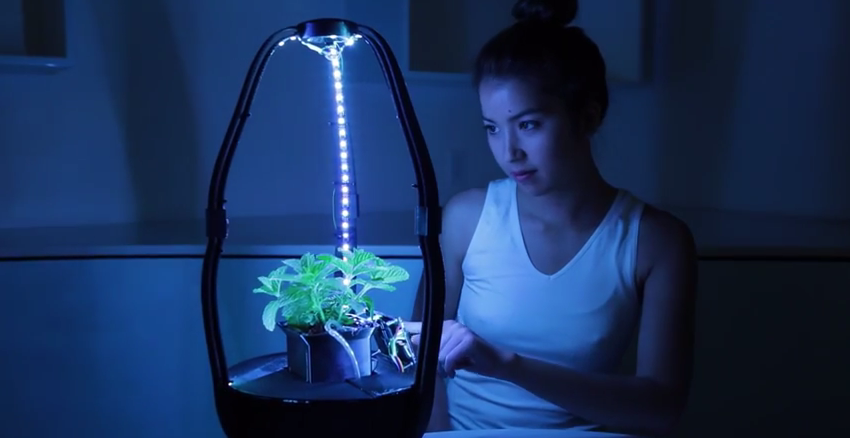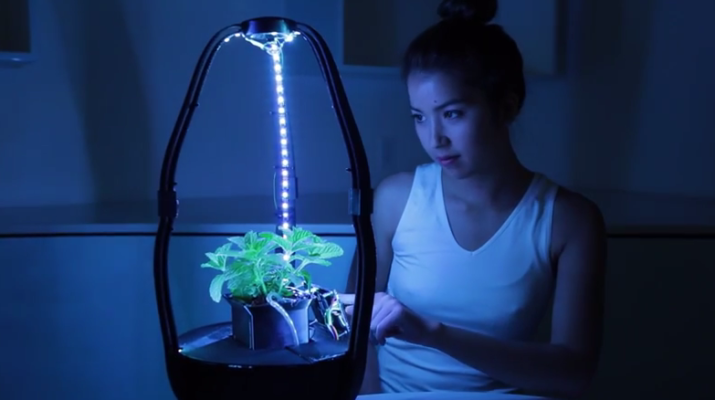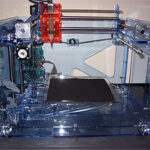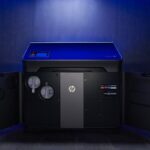

Coming as a shock to no one, humans need to eat food. As NASA readies its (still decades-off) manned mission to Mars, one of the problems that need to be addressed is how they’re going to send enough food with the space crew to keep them alive. Not only for the journey to Mars, but once they get to the destination in what is most likely going to be a one-way journey, or close enough to it that packing some crates full of Hot Pockets and granola bars isn’t going to cut it.
Always looking to crowdsource solutions, NASA is sponsoring the International Space Apps Challenge that invites makers, scientists, or just enthusiastic amateurs to create open sourced solutions to problems related to both space exploration and life here on Earth. One of the 25 challenges presented by Space Apps this year was the Print Your Own Space Food challenge that asked participants to help astronauts create food in space.
But the team behind AstroGro had other ideas. Rather than create a method to 3D print food, they used existing space 3D printing technology to create small pods that can grow fresh organic food in space. Each pod is environmentally controlled by an artificial intelligence that anticipates the needs of the crops being grown and adjusts based on those needs.
Because the pods are almost completely 3D printable using existing Made In Space 3D printers, the pods are completely replaceable if one is damaged, and can be scaled up or down depending on the needs of the crew. The pods can also be used used as filament for new and upgraded pods, and the plants will help maintain fresh air for the crew to breathe.
“Space travel and space colonization are not feasible without a renewable food supply that can adapt to the unpredictable conditions and needs, inside a shuttle and out. To build a system that both optimizes food growth in space and scales the food supply in a renewable manner means we help bring humanity one step closer to long-distance space travel,” explained the design team on their project submission page.

The entire system can be linked together and is controlled by a network of sensors that will monitor and optimize the growth of the plants. Rather than using a complicated camera system with image processing algorithms to monitor the crops, AstroGro proposes a simple system that monitors the plants’ absorption of water using the radiofrequency of water molecules. The amount of water in each plant will be used to calculate how much water and light it needs to continue being healthy.
Additionally the RF pulse can be used as a secondary heat source if there are any drastic variances in temperature by directly heating the water in the plant using dielectric heating. The pods will also contain LED lighting capable of emitting various bandwidths depending on need and what existing ambient lighting is able to provide.
Because plants grow differently in a weightless or near-weightless environment, the pods can be arranged in a wheel that spins around, causing the crops to grow inwards towards the center. The wheel’s spin ratio would be based on existing gravity so Earth-like growing conditions are replicated as closely as possible.
And if you think the AstroGro only has applications in space, think again; it can be used to grow fresh food in small, confined living spaces and urban environments. The Earth-based version of the AstroGro can help reduce the amount of water needed to grow food, and can reuse and allow for plants typically out of season or incapable of growing locally to be grown without the expense of shipping them in.
Obviously there are some kinks to be worked out. Crops grow pretty slowly, and there may not be room to grow enough food for an entire crew to stay alive. That means that there will need to be significant testing to find the optimal crops to be used with the pods. But the benefits may outweigh the drawbacks, as the psychological stress from long-term space flight can be relieved with the ability to produce fresh food. Additionally the very act of caring for and growing your own food can often be therapeutic and reduce stress.
So what do you think about this idea for long term space travel food production? Is it a nice idea with little to no hope of working, or do you think this idea may have cracked the problem? Let’s talk about it over in the AstroGo forum thread over at 3DPB.com.
When it comes to 3D real estate visualization in the USA, our service provides the perfect solution for bringing property listings to life. Through our platform, you can easily access cutting-edge 3D renderings that showcase your real estate projects in a way that attracts potential buyers and investors. Whether it's residential, commercial, or mixed-use properties, our team of experts uses advanced technology to create immersive visualizations that highlight the best features of your property, making it easier for clients to imagine the space as their own.
Through our website, you can quickly get high-quality 3D real estate visualizations that are tailored to your specific needs. With our help, you'll stand out in the competitive real estate market by offering potential buyers a realistic, interactive view of your property. Our efficient process ensures a fast turnaround time, while our attention to detail guarantees that every aspect of the property is represented accurately, giving you a powerful marketing tool to promote your real estate listings.






